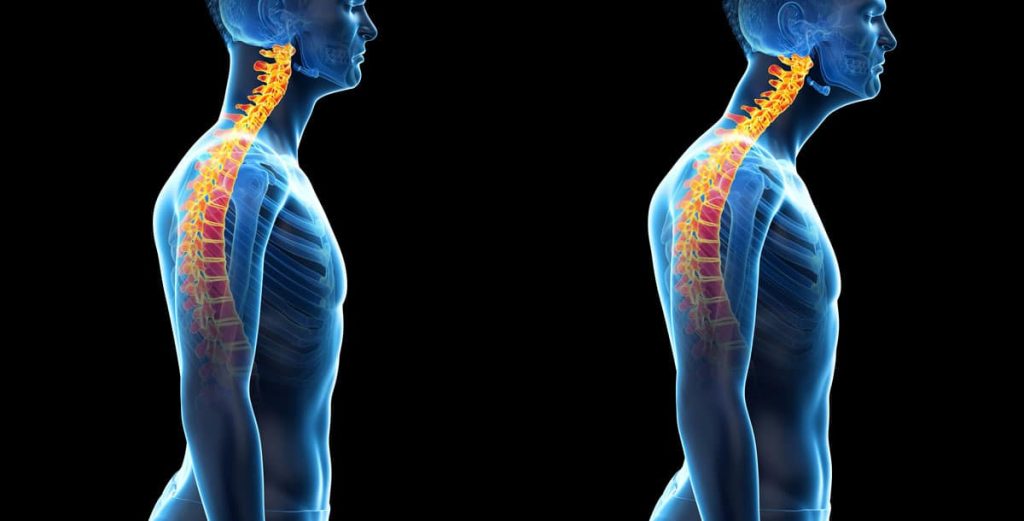Posture Matters – Correcting Poor Posture for Improved Health and Confidence
3 min read
Good posture doesn’t just boost self-confidence; it also protects the health of bones, joints and muscles. Over time, poor posture causes muscle imbalances that lead to pain and fatigue.
Good posture involves keeping your chin parallel to the floor, shoulders even and spine in its natural curves. It is essential for both dynamic and static positions.
Identifying Posture Issues
There is a direct connection between how you stand, sit, and lie down, and your overall health. Poor posture puts excessive strain on muscles, joints, and ligaments, and often causes pain and discomfort. Good posture balances the weight of the body evenly, minimizing pressure on muscles and bones.
Muscles help maintain posture by sending information to the brain about how your body is positioned. Slow twitch muscle fibres (static) are used for stabilization, while fast twitch muscles (phasic) are used to move. Over time, poor posture can lead to the waste of static muscles and over-use of phasic muscle fibres.
To check your posture, stand against a wall with the back of your head touching the baseboard. If your shoulders are even, hips are squared, and knees pointed forward, your posture is healthy. This test also allows you to see how close your hands are together in front of you. This is a great indication of how much you are slouching.
Correcting Posture Issues
The good news is that poor posture doesn’t have to be a permanent condition. It is possible to correct the problem with some dedicated effort and by changing certain lifestyle habits.
Practicing good posture reduces stress on muscles, bones, and joints. It also improves breathing and digestion. Some studies even show that it can increase energy levels. It is important to practice good posture at all times, even when you are not working or sleeping.
You can also improve your posture by practicing stretches and exercises that are designed to strengthen the muscles that support proper alignment. Your doctor or physical therapist can recommend specific exercises and stretches that are suitable for your needs and abilities.
Taking steps to improve your posture is one of the best things you can do for your overall health and well-being. It is especially important if you have an existing neck or back problem that can be made worse by bad posture.
Managing Posture Issues
The goal of good posture is to have your ears, shoulders, hips, and knees all aligned vertically from the side. This allows muscles to be used efficiently, decreases abnormal wear and tear on the joint surfaces, minimizes stress on spinal ligaments, and can prevent a fixed position that could lead to back pain.
Poor posture can be caused by a number of factors. It can come from a sedentary lifestyle, which causes the muscles in the back and core to weaken over time. Or, it can be due to being overweight or having a brittle bone condition like osteoporosis. This can cause a compression fracture in the spine (dorsal kyphosis), which creates a hunched back.
It’s important to check your posture throughout the day to see what is causing you to have poor posture. It’s also recommended to change positions frequently throughout the day, so your muscles don’t get tired. This can be done by taking breaks every half hour to stretch, stand, or move around.
Preventing Posture Issues
Long-term bad posture puts stress on muscles and bones, which can cause pain, soreness and stiffness. Good posture involves keeping the spine and limbs in proper alignment, which reduces abnormal stress on joints and muscles and minimizes body weight distribution issues.
Poor posture often results from modern-day habits like slouching while working at a computer, sitting in a chair for extended periods or bringing your head forward to look at your mobile phone. Over time, these positions overstretch and shorten the muscles in your shoulders, back and chest and allow gravity to pull the muscles down.
Fortunately, a few easy steps can help improve your posture. To start, ask friends and family members to observe your sitting and standing posture. You can also purchase posture tracking devices and mobile apps that provide information on your overall posture as well as scheduled reminders to correct your position. Consider seeing a physiotherapist, osteopath or Alexander Technique teacher for more information and advice.




